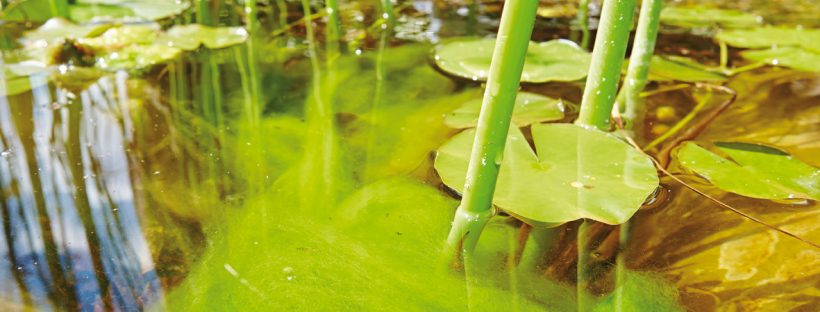Yesterday was Saint Patrick’s Day, when we mark the anniversary of his death by celebrating the Green Isle and all things green. What better time to talk about green water, right? Here are some interesting facts about that wonderful plant, algae, we all love to hate, and maybe even some more reasons to love the green!

Algae are not plants. Many are single cells with a simple chloroplast, the machinery behind the magic of photosynthesis. They share that capacity with plants, that wondrous ability to turn carbon dioxide and water into sugar using the power of sunlight, but they don’t have stems, leaves, roots or organs. Neither are they bacteria, though it is thought it may have arisen when a bacterium stole a chloroplast from a cyanobacterium, creating the first algal cells over one BILLION years ago. The term ‘algae’ actually refers to many entirely different lineages of organisms, some of which are multicellular, others which thrive under the ice cap, or are red or purple in color, or live inside corals, or lichens or even the fur of polar bears.
This loose conglomeration of not-quite-plants is home to anywhere between 72,000 and 1 MILLION species, depending on who’s counting. Multicellular macroalgae come in three different colors – red, green and brown – and we know them mainly as seaweed, like kelp and sea lettuce. But the vast majority are microalgae, the little one-celled devils that make water green (or red or pink or brown), and there are tens of thousands of species of them.
Why do algae matter? Because the world runs on algae, in just about every sense. Need oxygen to live? Many of us do. Algae create 50% of all the oxygen in the atmosphere. Ever get hungry? You’d be a lot hungrier without algae. All seafood is ultimately sustained by it, the base of both marine and freshwater food pyramids. The Koi in your pond could live directly just on algae. And, since every land plant descended from algae, and every land animal depends on land plants for sustenance, either directly as an herbivore or omnivore, or indirectly as a predator of herbivores, you could say we all owe our existence to algae. On a more approachable level, the oil that powers our cars and industry is mainly the product of the decomposition of immensely deep beds of dead algae. And going forward, the biofuels of the future will be directly produced by – you guessed it – algae.
So the next time you see that tinge in the water, instead of shaking your shillelagh in frustration, maybe you should celebrate ‘the wearin’ of the green’!
Check out our blog for more articles on spring, algae and other helpful tips and tricks the water garden industry here!
About the Author:

DEMI FORTUNA
Demi has been in water garden construction since 1986. As Atlantic’s Director of Product Information, if he’s not building water features, he’s writing or talking about them. If you have a design or construction question, he’s the one to ask.



Cool I learned a few things, thanks!